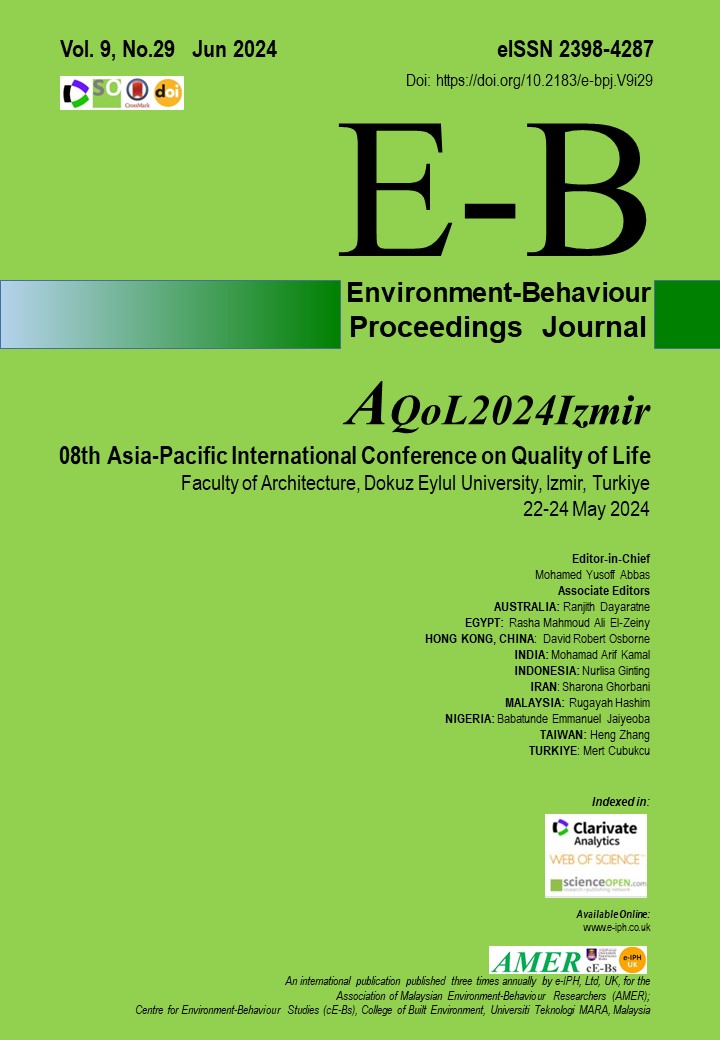Dimensional Impact of Emotional Intelligence on Creativity and Innovation in Malaysia's Multigenerational Workforce
DOI:
https://doi.org/10.21834/e-bpj.v9i29.6016Keywords:
Use of Emotions, Self Emotional Appraisal, Regulation of Emotion, Emotional IntelligenceAbstract
Employers must cultivate a conducive environment for employee innovation and productivity. This study focused on the impact of emotional intelligence (EI) on creativity and innovation among multi-generational employees in Kuala Lumpur's financial sector. 132 employees participated, with results analyzed using SPSS and SmartPls version 4. Findings reveal that only the Use of Emotions (UOE) dimension significantly boosts creativity, while age moderates the link between creativity and innovation. This study offers insights valuable for recruitment, training, and organizational management. It contributes fresh perspectives to existing knowledge, marking the first of its kind in this context.
Keywords: Use of Emotions; Self Emotional Appraisal; Regulation of Emotion; Emotional Intelligence
References
Bani-Melhem, S., Zeffane, R. and Albaity, M. (2018). Determinants of employees’ innovative behavior. International Journal of Contemporary Hospitality Management, 30(3), 1601-1620. https://doi.org/10.1108/IJCHM-02-2017-0079 DOI: https://doi.org/10.1108/IJCHM-02-2017-0079
Cheng, R., Lu, K., & Hao, N. (2021). The effect of anger on malevolent creativity and strategies for its emotion regulation. Acta Psychologica Sinica, 53(8), 847. https://doi.org/10.3724/SP.J.1041.2021.00847 DOI: https://doi.org/10.3724/SP.J.1041.2021.00847
Cocco, J., & Quttainah, M. A. (2015). Creativity versus innovativeness: Exploring the differences between the two constructs may lead to greater innovation in large firms. International Journal of Business and Management, 10(11), 83. DOI: https://doi.org/10.5539/ijbm.v10n11p83
Department of Statistics, Malaysia, (2020),www.dosm.gov.my/v1/index
Ding, H., Yu, E., & Li, Y. (2022). Exploring the relationship between core self-evaluation and employee innovative behavior: The role of emotional factors. Journal of Psychology in Africa, 32(5), 474-479. DOI: https://doi.org/10.1080/14330237.2022.2120700
Garson, G. D. (2016). Partial Least Squares (PLS-SEM): 2016 Edition. Statistical Associates Publishing, Asheboro.
Ghosh, K. (2020). Developing organizational creativity and innovation: Toward a model of self-leadership, employee creativity, creativity climate and workplace innovative orientation", Management Research Review, 38(11), 1126-1148. https://doi.org/10.1108/MRR-01-2014-0017 DOI: https://doi.org/10.1108/MRR-01-2014-0017
Hair, J. F., Black, W. C., Babin, B. J., & Anderson, R. E. (2018). Multivariate Data Analysis (8th ed.). United Kingdom: Cengage Learning.
Hair, J. F., Hult, G. T. M., Ringle, C. M., Sarstedt, M., Danks, N. P., & Ray, S. (2021). Partial Least Squares Structural Equation Modeling (PLS-SEM) DOI: https://doi.org/10.1007/978-3-030-80519-7
Harvard Business Review (2014). Managing People from Five Generations https://hbr.org/2014/09/managing-people-from-5-generations
Henseler, J., Ringle, C.M. (2015). Criterion for assessing discriminant validity in variance-based SEM Journal of the Academy of Marketing Science, 43(1), 1-21. DOI: https://doi.org/10.1007/s11747-014-0403-8
Hurt, H. T., Joseph, K., & Cook, C. . (1977). Scales for the measurement of innovativeness. Human Communication Research, 4(1), 58–65 DOI: https://doi.org/10.1111/j.1468-2958.1977.tb00597.x
Keen, C. C., Liang, C. H., & Sham, R. (2022). The effectiveness of parcel lockers that affects the delivery options among online shoppers in Kuala Lumpur, Malaysia. International Journal of Logistics Systems and Management, 41(4),485-502 DOI: https://doi.org/10.1504/IJLSM.2022.123452
Kline, R. B. (2016). Principles and Practice of Structural Equation Modeling. New York: The Guilford Press.
Lussier, B., Grégoire, Y., & Vachon, M. A. (2017). The role of humor usage on creativity, trust and performance in business relationships: An analysis of the salesperson-customer dyad. Industrial Marketing Management, 65, 168-181. https://doi.org/10.1016/j.indmarman.2017.03.012 DOI: https://doi.org/10.1016/j.indmarman.2017.03.012
Maheshwaran, M. S., Soniya, K., & Krishnaraj, S. (2018). A Study on Emotional Quotient Among new Generation Employees. International Journal of Trend in Scientific Research and Development. 6(2), 2456 - 6470 DOI: https://doi.org/10.31142/ijtsrd18900
Mishra, U. S., Patnaik, S., & Mishra, B. B. (2016). Role of optimism on employee performance and job satisfaction. Prabandhan: Indian journal of management, 9(6), 354 National Human Resource Centre (2024). A Guide to Multigenerational Workforce. https://nhrc.com.my/resource-centre/a-guide-to-multigenerational-workforce/ DOI: https://doi.org/10.17010/pijom/2016/v9i6/94960
Ng, T. W., & Feldman, D. C. (2015). The moderating effects of age in the relationships of job autonomy to work outcomes. Work, Aging and Retirement, 1(1), 64-78. DOI: https://doi.org/10.1093/workar/wau003
Pallister, J. G., & Foxall, G. R. (1998). Psychometric Properties of Innovativeness. Technovation, 18(11), 663–675. https://doi.org/10.1016/S0166-4972(98)00070-4 DOI: https://doi.org/10.1016/S0166-4972(98)00070-4
Park, M. R., Seo, M. G., & Sherf, E. N. (2015). The role of emotional intelligence in maintaining and using affect for creativity. Journal of Applied Psychology, 100(3), 917 DOI: https://doi.org/10.1037/a0038452
Salovey, P., & Mayer, J. D. (1990). Emotional intelligence. Imagination, Cognition and Personality, 9 (3), 185-211. DOI: https://doi.org/10.2190/DUGG-P24E-52WK-6CDG
Sandro, P. (2023). Book Chapter, The Cambridge Handbook of Creativity and Emotions. 205-220. doi: 10.1017/9781009031240.014 DOI: https://doi.org/10.1017/9781009031240.014
Serrat, O., & Serrat, O. (2017). Understanding and developing emotional intelligence. Tools, methods, and approaches to drive organizational performance, 329-339. DOI: https://doi.org/10.1007/978-981-10-0983-9_37
Toscano, F., Giusino, D., Diana, R., & Rahimi Pordanjani, T. (2023). The Role of Emotional Regulation in the Relationship between Nurses’ Creative Style and Innovation Behaviors: A Cross-Sectional Study. Nursing Reports, 13(2), 811-822. DOI: https://doi.org/10.3390/nursrep13020071
Tsai, C. T., & Lee, Y. J. (2014). Emotional intelligence and employee creativity in travel agencies. Current Issues in Tourism, 17(10), 862-871. DOI: https://doi.org/10.1080/13683500.2013.859232
Wang, P., Rode, J. C., Shi, K., Luo, Z., & Chen, W. (2013). A workgroup climate perspective on the relationships among transformational leadership, workgroup diversity, and employee creativity. Group & Organization Management, 38(3), 334-360. DOI: https://doi.org/10.1177/1059601113488163
Wang, Z., Bu, X., & Cai, S. (2021). Core self-evaluation, individual intellectual capital and employee creativity. Current Psychology, 40, 1203-1217. DOI: https://doi.org/10.1007/s12144-018-0046-x
Woods, S.A., Mustafa, (2018). Innovative work behavior and personality traits Journal of Managerial Psychology, 33(1), 29-42. https://doi.org/10.1108/JMP-01-2017 DOI: https://doi.org/10.1108/JMP-01-2017-0016
World Health Organization (2024). GHE: Life expectancy and healthy life expectancy. https://www.who.int/data/gho/data/themes/mortality-and-global-health-estimates/ghe-life-expectancy-and-healthy-life-expectancy
Zacher, H., & Griffin, B. (2015). Older workers’ age as a moderator of the relationship between career adaptability and job satisfaction. 1(2), 227-236. DOI: https://doi.org/10.1093/workar/wau009
Downloads
Published
How to Cite
Issue
Section
License
Copyright (c) 2024 Veronica Anak Anyot, Noraini Ahmad, Jugindar Singh Kartar Singh, Najiya Alhajri

This work is licensed under a Creative Commons Attribution-NonCommercial-NoDerivatives 4.0 International License.





